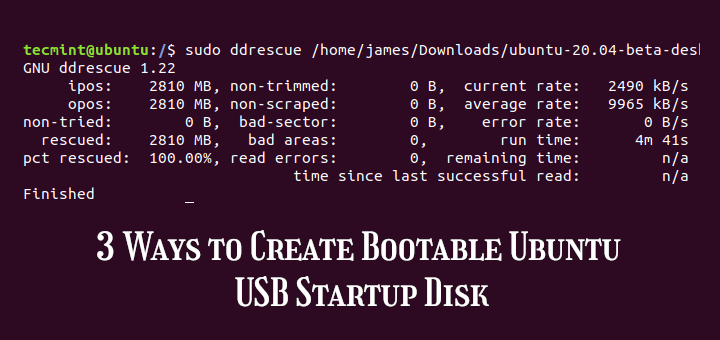

- #How to make a portable ubuntu usb how to#
- #How to make a portable ubuntu usb install#
- #How to make a portable ubuntu usb upgrade#
- #How to make a portable ubuntu usb windows 10#
- #How to make a portable ubuntu usb Pc#
#How to make a portable ubuntu usb install#
You can use it to boot your computer and install Windows 10.
#How to make a portable ubuntu usb windows 10#
Now, the Windows 10 UEFI boot stick has been created. Once you see the screen Your USB flash drive is ready, click on the Finish button. Once the download is completed, click on Next to start creating the Windows 10 bootable USB. Now, this tool will download the latest Windows 10 installation files that you select above on your device. If you don’t find the USB drive, click on the Refresh drive list option.

Then select the USB flash drive from the Removable drives list and click on Next to go on. Select the USB flash drive option and click on Next to go on. Tip: You can also select the Language, Windows Edition, and Architecture that you want to create for the Windows 10 UEFI USB.
#How to make a portable ubuntu usb Pc#
Then check the box Use the recommended options for this PC and click on Next to go on, which will automatically select the language, edition, and architecture that match with your computer. In the pop-up window, click the second option Create installation media USB flash drive, DVD, or ISO file) for another PC and click on the Next button. Run this program as an administrator and click on Accept to agree with the license terms. Click here to download the Windows Media Creation Tool from Microsoft's official website and save it on your computer. Make sure the USB flash drive is connected to your computer.
#How to make a portable ubuntu usb how to#
Now, let’s see how to create a Windows 10 UEFI USB via Windows Media Creation Tool.
#How to make a portable ubuntu usb upgrade#
To create a UEFI boot USB, you can perform a clean installation or in-place upgrade of the OS. Tip: This method is suitable for those computers that are using UEFI firmware. Similarly, you can use it to create a UEFI boot USB. Windows Media Creation Tool is one of the most common ways to create a bootable USB drive. How to create a UEFI boot USB? Before starting the following steps, you need to prepare a USB flash drive with 8GB space at least. Please keep reading the following part carefully. Let’s see how to create a Windows 10 UEFI boot stick. Now, you may have an overall understanding of UEFI boot mode. If your hardware doesn’t support the UEFI firmware, you need to purchase a new one that supports and includes UEFI. If not, you have to convert MBR to GPT disk first. One of the most important things is to make sure that your system disk is GPT form. In order to boot from USB in UEFI mode successfully, the hardware on your hard disk must support UEFI. UEFI has lots of advantages over BIOS, but not all computers and devices are supported.


With UEFI boot mode, your computer can initialize the hardware components and boot the OS stored on the hard disk. It serves as a “middleman” between your computer’s firmware and the operating system. UEFI (Unified Extensible Firmware Interface) is known as a motherboard firmware interface for computers. Why do so many people want to create a UEFI boot USB? In order to create a UEFI bootable USB successfully, it is necessary to figure out the following 2 questions first.


 0 kommentar(er)
0 kommentar(er)
